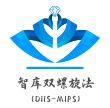Document Type
Research-Article
Abstract
November 28, the Institutes of Science and Development,Chinese Academy of Sciences (CASISD), the National Science Library of Chinese Academy of Sciences, and Clarivate released two reports, namely “2023 Research Fronts” and “Research Front 2023: Active Fields, Leading Countries/Regions”, at a joint forum in Beijing.
Full Text
November 28, the Institutes of Science and Development,Chinese Academy of Sciences (CASISD), the National Science Library of Chinese Academy of Sciences, and Clarivate released two reports, namely "2023 Research Fronts" and “Research Front 2023: Active Fields, Leading Countries/Regions”, at a joint forum in Beijing.
CHANG Jin, Vice President of the Chinese Academy of Sciences (CAS), said in his opening remark: “CASISD is a comprehensive and integrated platform of the CAS for the construction of national top scientific and technological (S&T) think tanks. Over the past 7 years since its establishment, CASISD has formed a set of systematized theoretical methodologies for think tank research, produced a number of important research achievements, and has become an important force in the construction of top S&T think tanks of the CAS.”
“The release of the ‘Research Fronts’ series of reports is an important initiative of CAS to ‘give full play to the function of the national top S&T think tank and grasp the trend of global S&T development’,” CHANG added.
PAN Jiaofeng, President of CASISD, gave a keynote speech on “Ten Years of Research Fronts: Insight into the Trends of Scientific Trends, Discovering the Scientific Research Fronts”. He said: “Starting from 2014, CAS in cooperation with Clarivate publishes the annual series reports ‘Research Fronts’ globally, in order to disseminate to the public the main progress and development trends of the S&T fronts on the basis of academization and specialization.”
“By combining the report and expert wisdom, the research team comprehensively analyzes the content of the report from a macro perspective and medium- to long-term dimension, rather than static, single-discipline, single-technology outcome evaluation, to grasp the main trends of the world's S&T development from a holistic forward-looking perspective,” PAN added.
Osher Gilinsky, Academic and Government Sales VP, APAC, Clarivate, said in his remarks: “I am very proud to see that our collaboration on this project has achieved so much success, not only in China, but also in the other parts of the world.”
“Research Fronts 2023” report identified 128 research fronts, including 110 hot and 18 emerging fronts in 11 broad research areas in the world of scientific research, such as agricultural science, botany and zoology, ecology and environmental science, geoscience, clinical medicine, biological science, chemistry and materials science, physics, astronomy and astrophysics, mathematics, information science, economics, and psychology.
Research Fronts are formed when clusters of highly cited papers are frequently cited together, reflecting a specific commonality in the research – sometimes experimental data, a method, a concept, or a hypothesis. A hot Research Front tracks an active area, and an emerging Research Front identifies a rapidly developing area in scientific research.
The report provides a distinctive advantage for administrators, policy makers, and others who need to monitor, support, and advance the conduct of research in the face of finite resources.
In conjunction with the Research Fronts 2023 report, “Research Front 2023: Active Fields, Leading Countries/Regions” was also published, which assess the research activity of the world’s major countries.
Recommended Citation
(2023)
"2023 Research Fronts: 128 Research Fronts Revealed,"
Double Helix Methodology: Vol. 4:
Iss.
1, Article 3.
Available at:
https://diis-mips.researchcommons.org/helix-content/vol4/iss1/3

